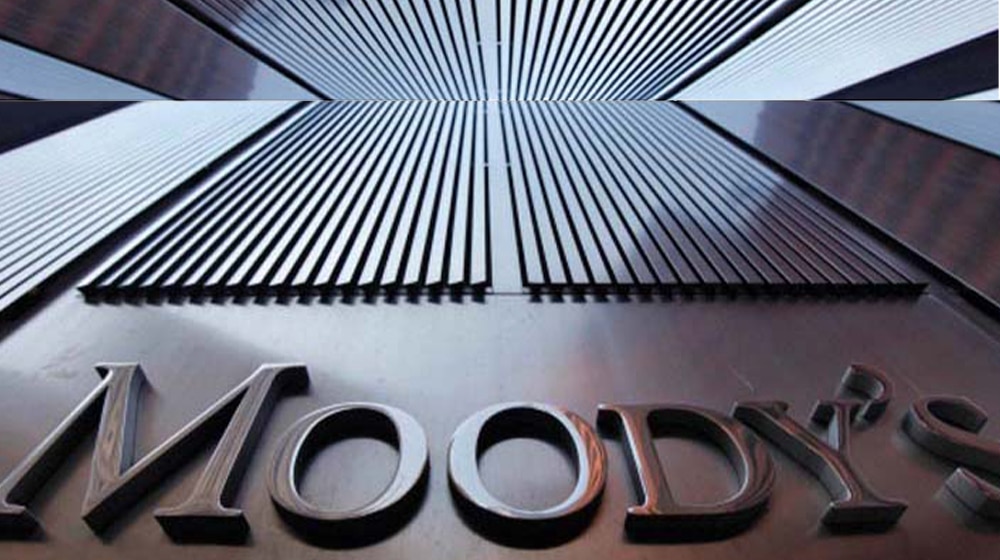Moody’s Investors Service has upgraded the local and foreign-currency long-term deposit ratings of five leading Pakistani banks: Allied Bank Limited (ABL), Habib Bank Limited (HBL), MCB Bank Limited (MCB), National Bank of Pakistan (NBP), and United Bank Limited (UBL).
The ratings have been raised to Caa1 from Caa2, reflecting an improved operating environment and the government’s enhanced capacity to support the financial sector.
The rating agency also upgraded the Baseline Credit Assessments (BCAs) and Adjusted BCAs for ABL, HBL, MCB, and UBL to caa1 from caa2, while NBP’s BCA was raised to caa2 from caa3. The outlook on the long-term deposit ratings for all five banks has been revised to stable from positive.
Driving Factors Behind the Upgrade
The upgrades follow Moody’s decision to raise Pakistan’s sovereign credit rating to Caa1 from Caa2, citing the country’s improving external position and progress in implementing reforms under the International Monetary Fund’s (IMF) Extended Fund Facility (EFF) program.
“Our decision to upgrade Pakistani banks’ ratings reflects the country’s improving operating environment, the government’s enhanced capacity to support banks in times of need, and the banks’ own resilient financial performance,” Moody’s stated.
The agency also raised Pakistan’s Macro Profile to “Very Weak+” from “Very Weak,” underpinned by the country’s improving external position. However, Moody’s cautioned that Pakistan’s foreign exchange reserves remain critically low, emphasizing the importance of continued progress under the IMF program to unlock further financing.
Moody’s highlighted the resilience of Pakistani banks, noting their stable, deposit-based funding profiles, high liquidity buffers, and solid earnings capacity. The agency expects further improvements in the operating environment as inflation is projected to decline from 30.8% in 2023 to 12.6% in 2024. Additionally, the State Bank of Pakistan’s (SBP) series of interest rate cuts—from a peak of 22% in May 2024 to 11% by May 2025—will likely reduce borrowing costs, stimulate credit demand, and lower problem loans, particularly in the SME and consumer segments.
However, Moody’s warned of potential profitability pressures due to compressed net interest margins resulting from the rate cuts. Asset risks also remain elevated, given the government’s high liquidity and external vulnerability risks.
National Bank of Pakistan (NBP)
NBP’s BCA and Adjusted BCA were upgraded to caa2 from caa3, and its long-term deposit ratings were raised to Caa1 from Caa2. The bank’s strong deposit-funded profile and improved earnings generation capacity were key factors in the upgrade. However, NBP’s adjusted capital buffers remain modest, and its significant exposure to government securities poses elevated asset risks. The bank’s non-performing loans (NPLs) stood at 14.2% as of March 2025, well above the sector average.
Habib Bank Limited (HBL)
HBL’s BCA and Adjusted BCA were upgraded to caa1 from caa2, along with its long-term deposit ratings. The bank benefits from good liquidity buffers, a strong deposit-funded profile, and solid asset quality, with NPLs at 5.3% as of March 2025. However, its high exposure to government securities and modest adjusted capital buffers remain challenges.
United Bank Limited (UBL)
UBL’s BCA and Adjusted BCA were upgraded to caa1 from caa2, and its long-term deposit ratings were raised to Caa1. The bank’s stable deposit base, strong liquidity buffers, and moderate profitability were highlighted as strengths. However, UBL’s NPLs stood at 14.7% as of March 2025, following its acquisition of Silk Bank. Despite this, the NPLs are fully covered by loan loss provisions.
MCB Bank Limited (MCB)
MCB’s BCA and Adjusted BCA were upgraded to caa1 from caa2, with its long-term deposit ratings also raised to Caa1. The bank’s strong profitability, stable deposit base, and good liquidity buffers were noted as key strengths. However, high asset risks and modest adjusted capitalisation metrics remain areas of concern.
Allied Bank Limited (ABL)
ABL’s BCA and Adjusted BCA were upgraded to caa1 from caa2, and its long-term deposit ratings were raised to Caa1. The bank’s low NPL ratio of 1.6% as of March 2025, stable deposit-based funding, and ample liquidity buffers were highlighted as strengths. However, its modest adjusted capital buffers and high exposure to government securities remain challenges.
Outlook and Risks
The stable outlook on the banks’ long-term deposit ratings aligns with the stable outlook on Pakistan’s sovereign rating. It also reflects the banks’ solid loan loss provisions, capital buffers, and improving operating environment.
However, Moody’s warned that any downgrade in Pakistan’s sovereign rating or deterioration in the banks’ financial performance, particularly in asset quality, profitability, or capital adequacy, could lead to a downgrade in their ratings.
